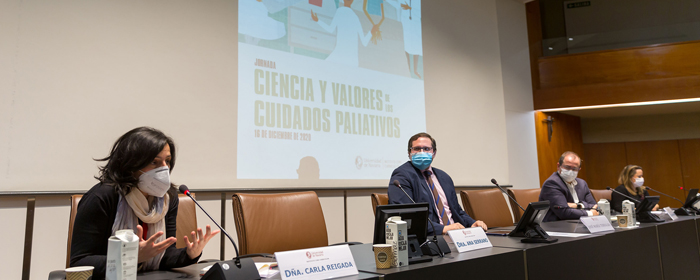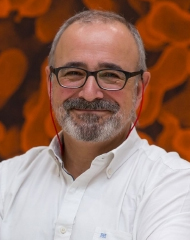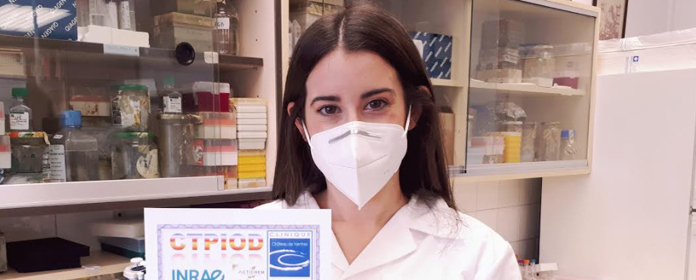Opinion: Well communicated, it's science plus
Enrique Sueiro holds a PhD and is director of Communication from CIMA of the University of Navarra.
The belief of some that sharing their science with the press means prostituting it is losing followers. The journal Science has just published a survey survey among scientists from the USA, Germany, UK, France and Japan. With all the nuances and limitations inherent to this subject of programs of study, there is a quantitative increase in journalist-scientist contacts and a qualitative improvement in the information published. The last paragraph of article suggests that those most involved in knowledge dissemination tend to coincide with those with the highest productivity, growing leadership and positive balance when calibrating advantages and risks of this communication. Fifty-seven percent were satisfied with their interaction with the press, compared to 6% who expressed dissatisfaction.
Figures aside, the opening trend is clear and healthy for a democratic society that has the right to know, with an accessible language, the truth of what is being investigated. This oxygenation of knowledge invigorates a mature public opinion, capable of detecting blatant manipulations when the truth that pleases is magnified or that which bothers is silenced.
Enriching empathy between scientists and journalistsCoinciding with the article, a veteran researcher told me about his experience with a science journalist from The New York Times who interviewed him on the occasion of his recently published work on health. Admiring the professionalism of the editor, he recounted the sequence of contacts. First, an email to apply for for a brief conversation. Then, several messages to contact agreement at the time of the call, with the time difference included and the aggravating factors of coinciding with a train trip in which several stretches lack cell phone coverage.
In a commendable example of mutual empathy and anticipation of the foreseeable, the researcher summarized in writing to the journalist the most significant data for the general interest. For his part, the editor, after a brief and eventful telephone-railroad conversation, sent by mail the sentence he had thought he understood and was interested in highlighting. A few days later, The New York Times published an enlightening, clear, correct and brief report. In 17 lines, the only sentence of the scientist in quotation marks was the final message asking for confirmation that he had understood correctly.
The survey of Science confirms that there are scientists who do not combine journalism with scientific culture, but notes that this perception has become more nuanced in recent years. I am sure that this interaction would be reinforced if scientists had experiences such as the one mentioned in the New York journal and if media companies were more committed to journalists and the quality of information.
Today, the passion for knowledge is allied with access to huge amounts of programs of study, reports, statistics and opinions. Unfortunately, information does not always equal knowledge. Moreover, the inconvenience of saturation is aggravated by the speed of new information.
As dangerous as the spiral of silence is the spiral of noise. In a scientific meeting at the CSIC I saw the global figure of some 30,000 scientific journals in the world being handled this year. Those in the strictly biomedical field are far fewer. Some estimate that anyone who wants to keep up to date with everything that is published, not only in his or her specialization program, should read 6,000 scientific articles a day; that is, about 6,000 more than life gives him or her to read in any given workshop .
Perhaps biomedical science and its communication can be further improved if we refresh that the goal is to cure or, at least, to alleviate the suffering of patients. It would also be a good idea to pamper the sensitivity that the end of curing does not justify any means and that the extension of rights should give priority to the weakest. When principles are blurred or evaporate, the most Kafkaesque metamorphosis begins: from ethical criteria we move on to aesthetic theater until we reach a pathetic end.
For example, sample, The Economist predicts that biology will be in the 21st century what physics was in the 20th. Along with obvious advances for mankind, the magazine discusses the case of the initial finding of the atom, composed only of electrons and protons, as mistakenly thought at the time. A subsequent breakthrough was the discovery in 1932 of a new element, the neutron. Just 13 years later, an aberrant milestone of mastery over nature shocked the world. The Economist recalls that "that power was not always benign, as the atomic bomb showed". No doubt out of ignorance at the time, the front page of Le Monde described the experiment as a "scientific revolution".
We need to harmonize scientific audacity and subtle communication. If it is false, it is not science; and if it is authentic, well communicated, it is science plus.





